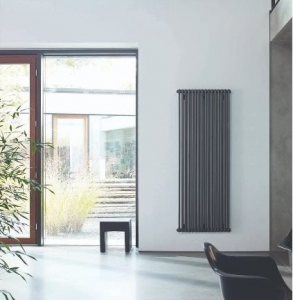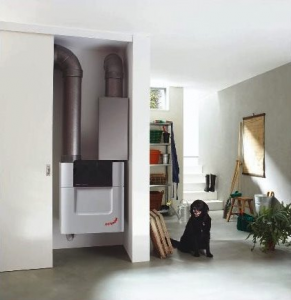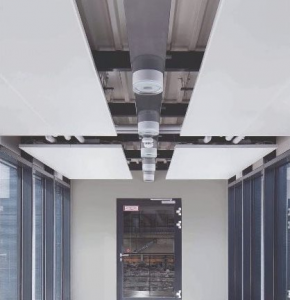ZEHNDER COMMERCIAL DIVISION
Suppliers of: Architectural Radiators commercial Radiant Heating & Cooling Ceiling Panels commercial Perimeter heating systems Commercial Convector heating commercial radiators Column radiators commercial Trench heating & perimeter heating systems.
For over 30 years Zehnder UK has been a leading manufacturer and supplier of made-to-measure decorative radiators, radiant ceiling panels and ventilation solutions into the UK construction market.
Driven by technological advance, Zehnder UK has a portfolio of products designed specifically to create a comfortable and healthy indoor climate for commercial builds in schools, hospitals and offices which range from multi-column, low surface temperature (LST) and panel radiators to radiant heating and cooling panels. For the domestic market, we offer a range of ventilation solutions, from extract fans through to MVHR ventilation units.
Specified by architects, consulting engineers and main contractors, these products offer an energy-efficient alternative to the usual heating and ventilation options.
Useful resources:
- Building Information Modelling (BIM) components: Click Here and view a video to see our products in action.
- Social Media: Twitter / Facebook
- CPD Seminars: Click here
- ErP Compliance: Click here
Products include:
- Multi-column
- Panel
- Convectors
- Trench
- Low Surface Temperature (LST)
Zehnder Decorative towel rails:
- Electric
- Dual Energy options
Zehnder Radiant heating and cooling:
- CeilingPanels / Sails
- Lay-In / Grid application
- Multi-service foil
The Multiservice foil is a revolutionary system for schools, offices and learning environments combining the best features of heating, lighting and acoustics, whilst allowing other services to be incorporated into its aesthetic design, such as speakers, smoke detectors, fire alarms and sprinkler heads, creating a more appealing ambience with an uncluttered ceiling.
In collaboration with Whitecroft Lighting, Zehnder UK have combined their expertise and knowledge in radiant heating with a leading manufacturer of lighting and acoustics.
Part of the Zehnder Group and with a broad product range we offer a full ventilation mix including traditional and classic intermittent extractor fans for bathrooms and kitchens - silent ones, discreet ones or decorative ones, whole house ventilation with heat recovery (some with highly accredited PassiveHaus certification), innovative semi-rigid ducting systems and an entire passive ventilation offering for windows including Solvents and over-frame vents in various colours and sizes. We also specialise in acoustic products for new developments with external noise issues.
Support Services:
- Our suite of CPD presentations: Across heating and ventilation, we have an ever-evolving portfolio of industry-renowned CPDs, encompassing Radiant Heating, Radiant Conditioning and Overheating in Homes amongst numerous others.
- Come and feel our solutions at our Experience Centres. We understand the need to learn about how our solutions can help deliver an ideal indoor comfort level. At both our Head Office in Camberley and our Experience Centre in Islington, London you can touch, feel and experience our portfolio of solutions in-situ and discuss your requirements in a relaxed environment.
- Combining the best of both worlds. We hosta programme of events at our London Specification Centre to provide you with the knowledge and expertise to make informed decisions for your projects. We’d be delighted to welcome you.
Zehnder - Ambitious Decarbonisation Programme Set to Transform Social Housing
 Zehnder - Ambitious Decarbonisation Programme Set to Transform Social Housing
Zehnder - Ambitious Decarbonisation Programme Set to Transform Social Housing
Improving the energy efficiency of the existing housing stock is not always a straightforward process. The UK’s existing building stock currently accounts for approximately 30% of the UK’s greenhouse gas emissions. New housing only accounts for 1-2% of the total building stock each year, and 80% of the UK’s existing housing will still be in use by 2050. Tackling the climate crisis requires a rapid shift to low-carbon economies and decarbonisation of housing will be a dominant theme in the future.
World’s first detailed decarbonisation road map
In its recent Sixth Carbon Budget, the UK’s Climate Change Committee (CCC) delivered the world’s first detailed road map for a fully decarbonised nation. The CCC’s new guidance to government – made up of nearly 1,000 pages across three reports – says the UK needs to cut its emissions by 78% below 1990 levels over the next 15 years and heralds a major transition for the economy and jobs. It is an ambitious report detailing the path for a green revolution.
The proposed transition will require changes to the way we live and how the UK economy operates, and to deliver this a major investment programme is required, in large measures by the private sector. This investment will be integral to the UK’s post-pandemic economic recovery over the next decade.
Getting to net-zero will require a massive expansion in renewable electricity generation. It will mean significant changes to how people travel, how land is used, and importantly, how buildings are heated. Improving the energy efficiency of buildings is key – a project that can be carried out effectively at scale in the social housing sector. The government recently announced a 10-point green recovery plan, which includes funding of £1bn to insulate homes and public buildings, using the existing green homes grant and public sector decarbonisation scheme.
£50million commitment to the social housing sector
The government has set a target that by 2030 all social homes must be a minimum of EPC C (EPC – energy performance certificates – are a rating scheme to summarise the energy efficiency of buildings). Presently, 44% of social homes are below this standard. The Social Housing Decarbonisation Fund (SHDF) Demonstrator will start the decarbonisation of social housing this year and support green jobs as part of the COVID-19 economic recovery plan.
Chancellor Rishi Sunak has committed £50million to the demonstrator project, which aims to uncover the best approach for improving energy efficiency in social housing. Seventeen projects have been selected to receive a share of the funding. The funding, which will be matched by the successful councils, will improve the energy efficiency of 2,000 of the worst-performing social homes.
Improving energy efficiency: lessons learned
In the past, there was a rush to insulate homes, but it is now recognised that a single measures approach to improve energy efficiency has not worked. Insulating homes without adequate attention to ventilation has been an unmitigated disaster, resulting in the creation of airtight properties with an unhealthy moisture imbalance – one problem has been solved only to create another. This has largely been led by a haphazard grants system and inadequate funding.
Large scale retrofitting has also been hampered by a lack of cohesive planning. For future schemes, there should be a shift in emphasis towards more joined-up holistic thinking. We must now look at how buildings operate as a whole and integrate processes from design through to implementation, and beyond to consider resident behaviour. Economies of scale in retrofitting must also be realised.
The next steps: funding and a long-term strategy
The UK has the least energy-efficient housing stock in Europe. The Climate Change Committee has concluded that “the UK’s legally binding climate change targets will not be met without the near-complete elimination of greenhouse gas emissions from UK buildings.”
With the UK government’s carbon-neutral target only 30 years away, social landlords have hit the point where the cost of net zero should be factored into their long-term business plans. While the government has committed to reaching its net-zero target by 2050 and is the first major economy to enshrine such a commitment in law, funding for decarbonisation in the social housing sector will be crucial for success.
Research by Inside Housing recently revealed that retrofitting all social housing in the UK to meet the net-zero target will require an estimated £104bn of investment. The CCC report has concluded that UK homes are “not fit for the future” and that long-term strategies do not exist to get social housing ready for 2050. The government’s 10-point plan may look promising, but we need more than rhetoric or an overview to ensure we have homes that are good for the environment and good for the health of residents. We need a detailed strategy on how delivery and financing models can support the large-scale take-up of effective buildings retrofit.
Now is the time for political bravery and policy ingenuity. The question is, can the government deliver it?
Zehnder - Decentralised Demand Control Solutions
 Zehnder - Decentralised Demand Control Solutions
Zehnder - Decentralised Demand Control Solutions
New sensors that can be integrated for measuring humidity, CO2 and VOC content.
The Zehnder ComfoAir 70 and ComfoSpot 50 compact ventilation units have been optimised further to provide even better ventilation in individual rooms or residential units without a centralised air distribution system.
Optional humidity, CO2 and VOC sensors adjust the supply and extract air to the requirements of residents, thus ensuring maximum living comfort in new builds or renovation projects. The washable enthalpy exchanger ensures that the sensors are particularly energy-efficient and offer various advantages for the centralised indoor ventilation system including heat recovery, humidity recovery and optimum ventilation. The high-quality fans and excellent insulation also ensure that they are extremely quiet during operation.
The decentralised ventilation unit Zehnder ComfoAir 70 provides fresh air and produces a pleasant indoor climate and feeling of well-being. Thanks to its intelligent technology, fresh air is supplied to the room permanently and stale, moist air exhausted to the outside – so you never have the feeling that you must open the window. This reduces the energy consumption because no valuable heating energy is lost through window ventilation. This saves energy and real money.
The ideal solution for single rooms and smaller living spaces, for refurbishments or new builds, the decentralised ventilation unit Zehnder ComfoSpot 50 impresses with its compact size and good performance values. As a decentralised solution, Zehnder ComfoSpot 50 is easy to install with a minimum of conversion work required. The control panel has been integrated into the unit for maximum ease of operation. The major benefit is the one-of-a-kind enthalpy exchanger: as this extracts moisture in addition to heat from the extract air, no condensate develops and the external façade stays clean.





